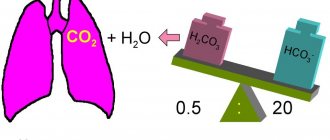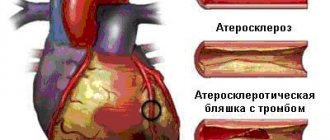B12 anemia or, as it is also called pernicious/megaloblastic, is a pathological condition that is characterized by a disruption in the formation and maturation of blood cells due to a deficiency of vitamin B12 in the body. The latter may be due to its insufficient intake into the human body or problems with absorption. Most often, the disease is diagnosed in patients over the age of fifty of both sexes. According to medical statistics, its prevalence does not exceed 1%, while at least 10% of patients over the age of seventy suffer from B12 deficiency.
The Department of Hematology at CELT offers diagnosis and treatment of B12 deficiency anemia in Moscow. Our multidisciplinary clinic was one of the first in our country to begin offering paid medical services and has been successfully operating for the third decade. Its staff includes leading Russian specialists, who have modern technologies and a diagnostic and treatment base in their arsenal. It allows you to accurately and quickly diagnose and carry out treatment according to international standards. You can find out the cost of services in our price list; check the numbers with our information line operators.
Causes of megaloblastic anemia
Megaloblastic anemia develops due to a lack of folic acid (vitamin B9) and vitamin B12 (cyanocobalamin) in the body.
The following factors can lead to a decrease in vitamin B9 levels:
- Errors in nutrition, when a person sharply limits himself in food.
- Impaired absorption of vitamin B9 in the intestine. This occurs in various pathologies of the digestive tract, for example, enteritis, colitis, celiac disease.
- Previous resection of the stomach or intestines.
- There are certain periods in a person’s life when the need for folic acid increases sharply, for example, the period of gestation and breastfeeding.
- Some types of hemolytic anemia.
- Exfoliative dermatitis.
- Parasitic infestations, in particular diphyllobothriasis.
- Carrying out extrarenal blood purification.
- Liver pathologies: hepatitis and cirrhosis.
- Chronic inflammation of the pancreas.
- Alcoholism.
- Taking certain medications: oral hormonal contraceptives, anticonvulsants, etc.
Vitamin B12 deficiency in the body can develop for the following reasons:
- Refusal of food of animal origin and adherence to vegetarianism.
- Oncological damage to the gastric wall or the presence of polyps in the stomach.
- Resection of the stomach and small intestine.
- Pancreatic adenoma is ulcerogenic.
- Carrying a child and breastfeeding him.
- Celiac disease.
- Crohn's disease.
- Liver pathologies: hepatitis and cirrhosis.
- Transcobalamin II deficiency.
Vitamin B12 and vitamin B9 are directly involved in the formation of human DNA and RNA, and the cells of the red bone marrow and mucous membranes of the digestive system will be the first to suffer. They are the ones that divide faster than others in the body. In this pathology, erythrocyte precursor cells are not able to make a full transition to a more mature form. However, they do not die; their cytoplasm continues to grow and develop. As a result, large defective red blood cells, which experts call megaloblasts, begin to circulate in the blood.
Vitamin B12 enters the body with food. Its main source is animal products. In the stomach, it interacts with a special substance called gastromucoprotein. Vitamin B12 forms a complex compound with it and in such a bundle penetrates the small intestine, where it is absorbed into the blood. Every day a healthy person should receive from 3 to 7 mcg of vitamin B12. In the liver, normally, it contains from 3 to 5 mg - this is a cyanocobalamin depot. The body should receive more folic acid per day - about 100 mcg. Every day (with a standard diet) a person consumes from 300 to 750 mcg of folic acid. The body's depot contains about 5-10 mg of this substance.
Vitamin B12 contains 2 coenzymes. If there is a deficiency of the first coenzyme, then DNA is not able to form normally, which leads to a failure in the production of erythroid cells and the appearance of megaloblasts in the blood. The process of synthesis of leukocytes and platelets also suffers, but not to the same extent as red blood cells.
In addition, the lack of the first coenzyme prevents the body from producing an amino acid (methionine), which is part of the myelin sheaths that cover nerve trunks and cells. Therefore, the functioning of the nervous system as a whole is disrupted.
A deficiency of the second coenzyme, which is part of vitamin B12, leads to the body’s metabolism of fatty acids being disrupted. Toxins begin to accumulate in it, which damage the cells of the spinal cord. This pathology is called funicular myelosis.
Mechanism of disruption of red blood cell formation
The disease is associated with changes in the DNA synthesis of bone marrow cells, which is why instead of proper red blood cells, erythroblasts are produced, which cannot bind molecular oxygen and carry it throughout the body to organs and tissues.
At the same time, the process of cell maturation or the biochemical synthesis of hemoglobin is not damaged, as in other anemias. The main changes occur in cell division, the balance between the nucleus and protoplasm is disrupted. Nuclear chromosomes are delayed in development and disrupt the structure of the nucleus.
Megaloblasts are much larger in size, the nucleus is not located in the center, the nucleus can be divided into segments
The body itself destroys “low-quality” abnormal cells in the bone marrow; they live half as long as a normal red blood cell. Under the influence of the hormone erythropoietin, the consumption of vitamins B12 and folic acid increases, since they are enzymes of this process. Erythroblasts accumulate in the peripheral blood. At the same time, there is an increase in the process of destruction of granulocytes and platelets in the spleen and intestinal epithelium.
Symptoms of megaloblastic anemia
Most often, megaloblastic anemia develops due to a lack of vitamin B12 in the body. All symptoms of this disorder are combined into four large groups:
- Symptoms associated with disorders of the digestive system. With megaloblastic anemia, atrophic changes occur in the mucous membranes of the stomach and intestines, and there is also a lack of production of enzymes necessary for normal digestion of food. This leads to patients making the following complaints:
- Lack of desire to eat.
- Aversion to meat dishes.
- Painful sensations in the tongue, distortion of taste. The tongue may become brightly colored and covered with a shiny film (Gunther's atrophic glossitis).
- Complaints of nausea, which may periodically result in vomiting.
- Stool disorders (diarrhea).
- Symptoms of funicular myelosis.
- Headache.
- Sensitivity disorders in the form of “goosebumps”, tingling of the skin, etc.
- Feeling of cold in the extremities, deterioration of their sensitivity.
- Changes in a person's gait.
- Decreased muscle strength, and with severe anemia, the patient develops paralysis.
- Circular hypoxic syndrome. Its manifestations:
- Feeling of constant weakness.
- Increased fatigue.
- The appearance of shortness of breath. At first it occurs against the background of physical activity, and then begins to bother, even when the person is resting.
- Cardiopalmus.
- Painful sensations in the chest (heart pain).
- The skin becomes unnaturally pale or even icteric.
- Symptoms caused by disorders of the nervous system:
- The person becomes more irritable and becomes very nervous.
- Hallucinations may occur.
- Convulsions occur periodically.
- Mental abilities deteriorate.
At the beginning of the development of anemia, a person may not make any complaints, since there will be no pathological symptoms during this period. There may be a slight deterioration in health, fatigue and mild dyspepsia. As a rule, patients do not go to doctors during this period. Although already at this time it is enough to do a blood test to identify developing anemia.
As the disease progresses, symptoms begin to increase in severity. If a person already has any chronic pathologies, their symptoms will worsen. For example, this is true for angina and arrhythmia. Swelling also appears on the legs and arms, as well as on the face.
In old age, anemia most often has a hidden course. Patients do not indicate to the doctor that they feel unwell, which makes diagnosis difficult.
Who develops B12 deficiency with folic acid
The most common causes of deficiency are:
- vegetarianism and passion for fashionable diets for weight loss;
- diseases of the stomach and intestines associated with diarrhea and impaired absorption of food;
- diphyllobothriasis is a disease from the group of helminthiasis, infection with tapeworm eggs occurs through dirty hands, fish, in the Russian Federation, focal areas along northern rivers, in the Urals and the Far East;
- pregnancy with uncompensated expenses (anemia can be transmitted to the fetus);
- chronic alcoholism.
The broad tapeworm lives in the human body for years, sucking out vitamins
How to detect megaloblastic anemia?
The search for the correct diagnosis begins with collecting anamnesis and listening to the patient’s complaints. An experienced doctor may suspect anemia already at this stage.
Patient examination includes the following steps:
- Examination of the skin: it is pale, sometimes with a yellowish tint (“parchment skin”).
- The tongue is red and shiny, painful and slightly swollen.
- When listening to the heartbeat, systolic murmurs and tachycardia are diagnosed.
- When palpating the peritoneum, an enlarged spleen is palpated.
- There are also signs of funicular myelosis.
The next stage of diagnosis is donating blood for clinical analysis. The results of the study will reveal a decrease in the number of red blood cells and hemoglobin, the color index of the blood exceeds 1.1. Sometimes anemia is accompanied by thrombopenia and leukopenia. Macrocytes and megaloblasts are also visualized in the blood. Blood cells change their normal shape and size. Another sign of megaloblastic anemia is the presence of Kebbot rings and Jolly bodies in the blood. The reticulocyte level is decreased.
There is also a deficiency of folic acid and vitamin B12 in the serum part of the blood. Serum iron levels remain within normal limits or increase, which is caused by the accelerated destruction of red blood cells. This fact also provokes a jump in bilirubin in the blood.
Studying the bone marrow, which is obtained by performing a sternal puncture, allows us to clarify the diagnosis. The study must be carried out in advance, that is, before starting treatment. The fact is that taking vitamin B12 will return the composition of the bone marrow to normal within 1-2 days, and the signs of megaloblastic anemia will be stopped.
The vast majority of patients are diagnosed with damage to the mucous membranes of the digestive system with their atrophic changes. The production of hydrochloric acid in the stomach decreases.
Thus, the diagnosis of megaloblastic anemia consists of 3 main stages:
- Blood sampling for general analysis.
- Performing a bone marrow puncture.
- Collecting anamnesis and studying the condition of the digestive system organs, including the liver, spleen, etc.
It is imperative to exclude the fact that the patient has a parasitic infestation.
The role of folic acid in the development of anemia
Folic acid in the form of salts (folates) enters the body with food. Unlike B12 reserves, folates run out within a month (up to 4 months are possible) after delivery from the duodenum ceases. Absorption of folic acid occurs in the small intestine. The carrier protein delivers the vitamin to the liver and bone marrow.
The further role of folates depends entirely on the presence of cyanocobalamin. With a lack of B12, they cannot participate in the process of DNA synthesis in cells. Accordingly, the synthesis of blood elements is disrupted. Abnormal megaloblasts develop.
How to treat?
Treatment should be based on the causes that led to the development of anemia. It may be necessary to take antiparasitic drugs, eliminate polyps or other neoplasms of the digestive system, treat intestinal diseases, place the patient in a drug treatment clinic if he suffers from alcohol addiction, etc.
It is imperative to adjust the patient’s diet. It is necessary to include meat, liver, fermented milk products, fresh vegetables and fruits in its menu.
To eliminate vitamin B12 deficiency, intramuscular or intravenous administration of cyanocobalamin is possible. From 200 to 1000 mcg of the drug can be prescribed per day, depending on the severity of anemia.
After the blood counts return to normal, the dosage of the drug can be reduced, or the frequency of injections can be reduced. That is, the drug is administered once every 2 days, and then 2 times every 7 days.
Improvement occurs within a week from the start of treatment, which is characterized by the development of reticulocyte crisis. The level of young red blood cells in the blood increases by 2-3%. The effectiveness of the therapy is indicated by normalization of blood counts.
Sometimes vitamin B12 is prescribed for the rest of your life, for example, for Addison-Biermer anemia. With funicular myelosis, it is necessary to administer 800 to 100 mg of cyanocobalamin to the patient daily. It will be possible to reduce the dosage of the drug only after the patient has been completely relieved of neurological symptoms.
Sometimes megaloblastic anemia is very severe, and the patient himself may fall into a coma. In this case, he requires a transfusion of red blood cells.
When autoimmune diseases are the main reason for the development of anemia, the patient requires the administration of glucocorticosteroids. The dosage of the drug should be minimal and the course of treatment short.
For folate deficiency anemia, folic acid is prescribed. The daily dose is from 1 to 5 mg of the drug, depending on the severity of the disease. After all the symptoms of anemia have been relieved, a course of folic acid will be required to prevent recurrence of the disease. But the dose of the drug should be reduced.
Clinical symptoms
The symptoms are best studied for Addison-Biermer anemia. There are 2 stages of flow:
- initial (preclinical) - there are no patient complaints, manifestations can be detected by chance only by laboratory tests, especially if they are carried out after stressful situations;
- clinical - typical symptoms appear.
Common symptoms of anemia include:
- dizziness;
- complaints of general malaise, weakness;
- nausea and loss of appetite;
- inflammation and burning sensation of the tongue;
- the appearance of painful ulcers on the oral mucosa (stomatitis);
- yellowing of the skin due to an increase in the level of bilirubin in the blood and damage to liver cells.
Megaloblastic anemia is characterized by damage to the nervous system (due to destruction of the spinal cord roots), which manifests itself:
- tingling in fingers;
- impaired skin sensitivity;
- difficulty in movement.
In case of brain damage and severe course, the following are possible:
- memory impairment;
- hallucinations, delusions;
- increased irritability;
- coma.
Prevention and prognosis
To prevent the development of anemia, the following recommendations must be followed:
- Eat right by eating foods rich in vitamins B9 and B12.
- Lead a healthy lifestyle, give up alcoholism.
- Avoid situations that could lead to parasite infection.
- Treat all diseases of the digestive system in a timely manner.
As for the prognosis, with timely treatment it is favorable and it is possible to completely get rid of anemia.
Diagnostics
A general blood test allows you to suspect anemia at the preclinical stage. The general analysis reveals:
- decrease in the number of red blood cells;
- increasing their size;
- high color index (more than 1.1);
- unchanged hemoglobin content;
- under a microscope, remnants of nuclei in the form of rings and inclusions are detected in erythrocytes;
- decrease in the number of reticulocytes, neutrophils, platelets;
- all cells are increased in size.
Analysis of bone marrow punctate is carried out before the start of treatment with vitamin injections, since the morphological structure changes within 24 hours after the first administration of the drug.
In the bone marrow composition:
- cells of the erythrocyte lineage predominate;
- a discrepancy is detected between their nucleus and cytoplasm;
- disruption of other lineages is confirmed by large neutrophils and megakaryocytes.
In biochemical tests
- moderate increase in free bilirubin;
- serum iron is slightly increased;
- an increase in LDH (lactate dehydrogenase enzyme, indicating increased destruction of red blood cells) is detected.
Conducting a quantitative analysis for the content of B12 and folic acid is possible only in specialized laboratories in hematology departments. This study allows us to determine the exact cause of anemia.
Which doctor treats megaloblastic anemia?
When the first signs of anemia appear, you should contact your local physician. If the doctor detects such a violation, he will redirect the patient to a hematologist who will prescribe treatment. Consultation with specialized specialists is possible, including: neurologist, infectious disease specialist, hepatologist, gastroenterologist. To select an adequate diet, you should visit a nutritionist.
Author of the article:
Shutov Maxim Evgenievich |
Hematologist Education: Graduated from Kursk State Medical University in 2013 and received a diploma in General Medicine. After 2 years, he completed his residency in the specialty “Oncology”. In 2021, she completed postgraduate studies at the National Medical and Surgical Center named after N.I. Pirogov. Our authors







